A good summary can benefit the writer a lot. But how does a summarizing tool help with it?
Summary writing is one of the key skills for any writer. Learning it can be difficult, but nowadays, you simply don't have to. Why is that? Because summarizing tools can help you create summaries without any hassle.
This article will explore the importance of a summary, the reasons to use a tool, and how it can help you. So, let's get started.
What Is A Summary? Explaining The Defining Traits
The text summary is a short description of the primary content. It summarizes the article's key points and is usually created by the writer. The text summary should be concise and straightforward without using too much technical jargon.
A good summary will provide an overview of the article's main points while still drawing in readers with an interesting or compelling introduction. Now, it's important to remember that a summary is NOT the main content.
So, it can leave out some of the key things that you'd still want your reader to find out in the main text. For instance:
- A summary should focus on the idea rather than details;
- It should sell the reader on the work and motivation behind it;
- It should encapsulate the idea thoroughly and provide the tip of the iceberg;
- It shouldn't feature anecdotes or stories;
- It should represent the introduction and conclusion of a full text.
A summary isn't a shorter version of an article or text. Instead, it's a glimpse and a peak into the author's idea and motivation behind the content. Take a movie synopsis, for example. Does it feature all the important plot details?
No, and neither does the trailer. You watch the trailer, read the synopsis and still watch the movie to find out its key details. That's what your summary should do. It should entice the reader and make them more eager to read your primary text.
What Is A Summarizing Tool?
Summarizing tool is software that summarizes articles and other text. It is often used to generate reports, presentations, or summaries. A summarizing tool provides a summary of the article and the key points in each paragraph.
The summarizer will highlight the most important information in an article so that readers can quickly get the gist of it. Summarizers are often used for research purposes and to save time when compiling information from multiple sources.
The summarizer will give you a quick overview of what's been said so far but won't go into detail about any one point. But how does it work? Here's a glimpse into the key aspects:
- Summarizing tool is an AI-powered software that takes a large block of text and extracts its key points.
- It then creates a summary of the text with the help of natural language processing and machine learning algorithms.
- For the final edit, you can further shorten the length of the summary or pick the style of summary you like.
These are the three most common traits of a summarizing tool. Granted, they could be different, but they're mostly dependent on the length of the summary or the number of sentences you wish for your summary to be.
Importance OF Summaries: Why Should You Use A Summarizing Tool?
Summarizers are vital for anyone who wants to save time and improve existing content by providing a summary with it. These summaries aren't only necessary but must be according to the requirement.
That's when a tool comes into play. It's important to remember that the summaries come in two formats:
- Short summary, which is usually around 150 words long;
- Long summary, which is usually around 250 words long.
Some people might complain that the summaries are not as engaging or entertaining as the original text, but that's not really the point. The whole point of these summaries is to provide you with a quick overview of what you need to know about the book without wasting too much time on it.
That's why it's important to use a dependable summarizing tool, as it can help with many aspects. For instance:
- The summarizer is heavily used by writers to save time on writing summaries of long essays, articles, etc.;
- The summarizing tool can be used for different purposes, such as research papers, articles, books, etc.
Therefore, a summarizing tool is vital not only for all types of content but for writers too.
How Does Summarizing Tool Help Writers With Engaging Summaries?
Summarizing tool helps a writer in many ways. So, when you're writing an engaging summary, the tool can help you with these six primary benefits:
1. Encapsulating The Idea
One of the key aspects of summary writing is that it needs to encapsulate the idea. For a writer to do this manually, it'll take an hour or so to just summarize a 1000-word text roughly. But, it might take longer than that for a thorough summary.
But, here's how you can benefit from using a summarizer:
- Upload the content into the summarizer;
- Let it summarize your text;
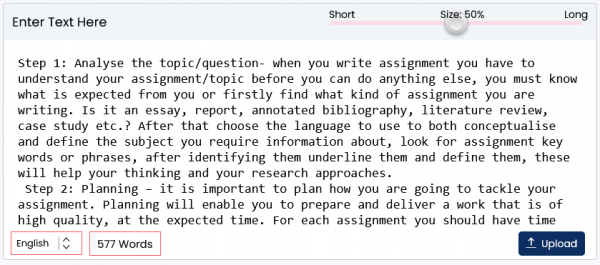
- Wait for it to finish
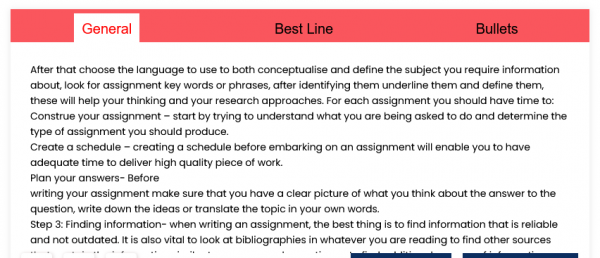
- And done.
As you can see, it took less than a few seconds to write the summary. Now, compare it to the time it would take you manually to do this. Reducing a 500-600 word article into a summary can be difficult. So, the first thing that a summarizer tool helps with is that it encapsulates the idea thoroughly.
2. Helps Writing Length-Based Summaries
Summary writing is different for various writing niches. For instance, a summary in academic settings would be around 250-300 words—depending on the requirement. Whereas blogging or websites require the summary or meta description to be approximately 50-80 words.
This is one of the key aspects of a summarizing tool, as it can help with both types. Here's an example of a summarizing writing a summary in three different lengths:

Once you pick the option for your summary, you will get them in your desired length, as seen below:
Medium: ideal for academic content such as essays, research papers, etc.
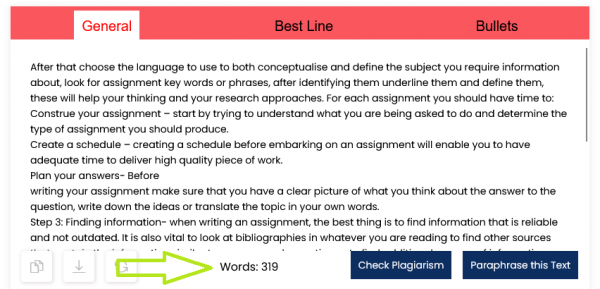
Short: ideal for blogs, social media captions, emails, etc.

Long: Rarely required, but ideal in long-form content like research papers or dissertations.
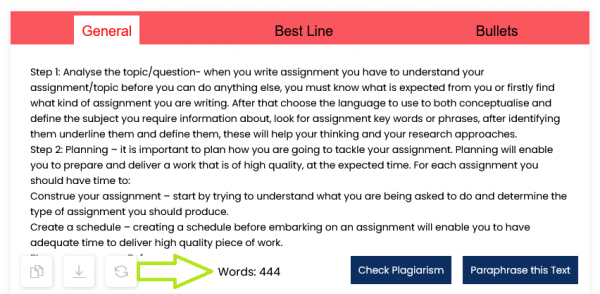
As you can see, all three content lengths are pointed in each image. It can vary depending on your requirement, but this is a very convenient option if you use a reputable summarizing tool.
3. Helps Write A General Summary
Writing a general summary is one of the major requirements of many content types. This general summary can be based on paragraphs or a couple of sentences. However, it wouldn't feature anything fancy.
The only purpose of this type of summary is to capture the idea within a few words. Here's how the summarizer does it:
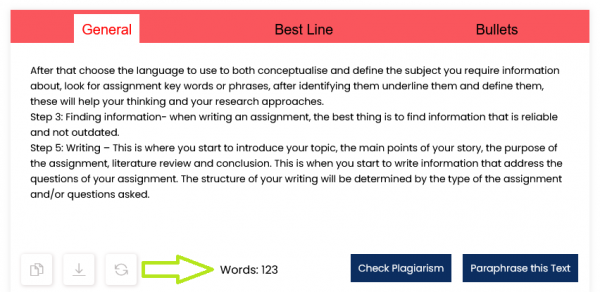
As you can see in this image, the summary is set to the general mode. So, it's in two main paragraphs. This type of summary can be used for captions, or you can simply make more edits to it and use it in any academic content.
4. Helps Write A Summary With Best Line(S)
If you're writing short-form content, say around 500-600 words, you may not need more than 40-50 words. This type of length is ideal for meta descriptions or blog summaries. So, picking the best line mode in a good summarizing tool can help with just that:
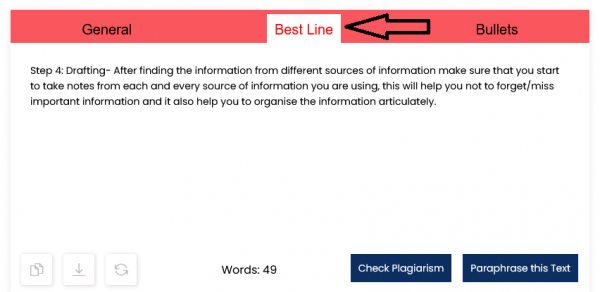
Doing this brings the summarizer to present your entire content within a single best line or sentence. It could be a couple of sentences at a time but no longer than a paragraph. So, this is yet another way that a summarizing tool helps you with an engaging summary.
5. Helps Write A Bullet Point-Based Summary
Suppose you're looking for a more extensive summary. In that case, using the bullet-point mode in a summarizing tool can prove equally beneficial. This type of summary is ideal for social media or emails, but you can use them anywhere you like.
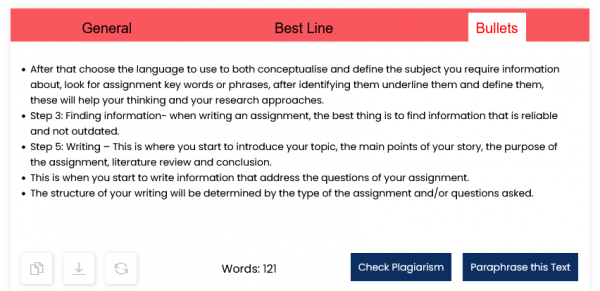
And when the summarizer helps you write a summary in bullet points, you can also use it in a research paper summary. Simply because it encapsulates each important argument in a single bullet point.
6. Helps Save A Lot Of Time
The final thing to understand about the help of a summarizing tool is the fact that they save a lot of time. So, if you're writing the summary of a 1000-word article, then let us analyze what we know about summarizing manually:
- Take notes for at least 15-20 minutes;
- Writing the main points for additional 20-25 minutes;
- Editing and proofreading for further 10-15 minutes.
So, that's roughly around an hour or an hour and a half. But, if you use a summarizing tool, it's basically seconds. You upload the content, summarize your text, and pick the length or summary mode you like—that's it. That's how easy and time-saving a summarizing tool can be.
Conclusion
These are the six main ways a summarizing tool can help you write engaging summaries. Remember, it's important that you focus on using the tool as an extension rather than an alternative. So, use the tool as your assistant, but make sure you have an idea of the kind of summary you want.
